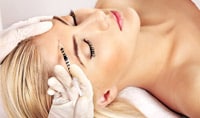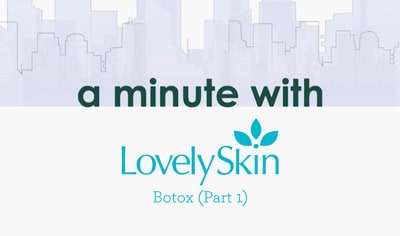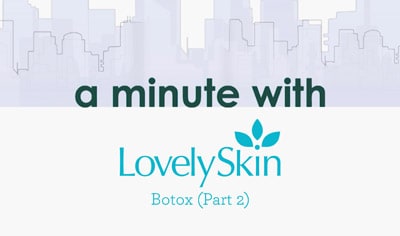Skin Care
Discover the Differences Between BOTOX® and Dysport™ Wrinkle Relaxers
by Marie|October 14, 2015
Wrinkle relaxers are the answer to deep-set expression lines that appear on the forehead, in between the brows and around the eyes. BOTOX® and Dysport™ are two effective wrinkle relaxers that Dr. Joel Schlessinger performs at his clinic. While the two procedures are similar, there are some key differences that can help you decide which one is right for you.
Both BOTOX® and Dysport™ are FDA-approved wrinkle relaxers that target wrinkles and fine lines caused by repetitive facial expressions. They are commonly used to treat brow furrows, deep forehead wrinkles and crow’s feet. During both procedures, botulinum toxin A is injected into the treatment area. The treatments work by blocking signals from the nerves to the muscles in the face so that the muscles can no longer contract and cause wrinkles.
Both BOTOX® and Dysport™ are injected into the skin and topical numbing solutions can be applied so both are nearly painless. Each treatment only takes about 15 minutes and there is no downtime following either of them so you can resume your normal activities immediately. With both procedures, patients may experience temporary bruising near the injection site but this fades quickly within the next few days.
There are a few key differences between BOTOX® and Dysport™ that you should consider when choosing a treatment. Patients generally see quicker results that last longer with Dysport™. During clinical trials, Dr. Joel Schlessinger saw results as quickly as two to three days in patients treated with Dysport™ as opposed to three to four days with BOTOX®. The results of Dysport™ also last longer than BOTOX®. Dysport™ can last for up to four months while BOTOX® can last for up to three months. If you are unable to attend follow-up appointments every three months, Dysport™ may be the best choice for you.
Dr. Joel Schlessinger often recommends either BOTOX® or Dysport™ based on which areas the patient would like to treat. He recommends treating fine lines and wrinkles on the upper forehead with Dysport™ which often performs better than BOTOX® in this area. If this area is a concern for you, Dysport™ is a good option. BOTOX® is still a very popular choice for areas such as between the brows and around the eyes. If you struggle with “11s” between your eyes, BOTOX® can help smooth the area.
As with any cosmetic procedure, you should always consult with a dermatologist or cosmetic surgeon about which treatment is right for you. Visit Dr. Joel Schlessinger’s clinic site to find out more about both these and other treatments. If you have any questions about BOTOX® or Dysport™, ask Dr. Joel Schlessinger in the comments.








